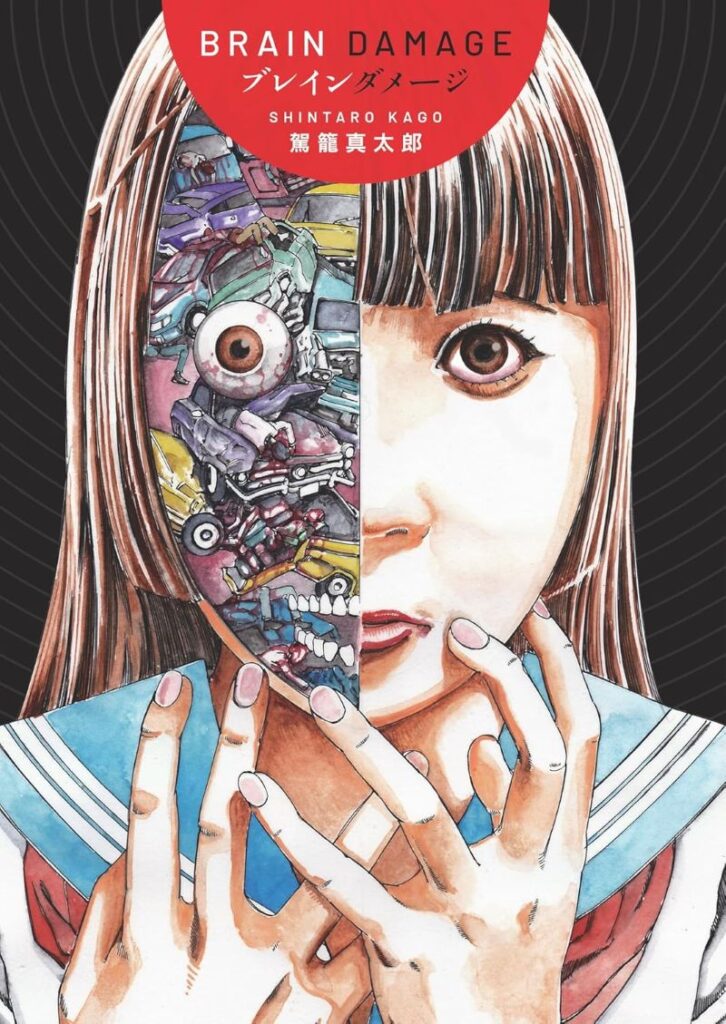
Kago returns with a collection of four unrelated short manga stories originally published in Japan in 2017. The stories all revolve around body horror, missing much of the inventive black humor of his prior two-volume Fantagraphics release, the fantastic Dementia 21. They’re also rendered in a slightly looser, less polished art style that gives them the feel of quick sketches rather than fully formed works of art. While the collection is chock full of interesting concepts, it seems like a step down from the wildly inventive, surreal heights of Dementia 21.
Buy Brain Damage hardcoverThe book’s format of collected but unrelated body horror shorts bears a striking similarity to the seemingly endless parade of short-story manga collections from the ruling king of horror manga, Junji Ito. If you’re an Ito fan, you’ll be right at home here, although only the first story comes close to matching his talent for bizarre, twisted scenarios and gut-punch payoffs. That story, “Labyrinth Quartet,” presents four identical young women who find themselves imprisoned in an abandoned building, leading them to investigate why they’ve been styled to look like each other while they search for escape. The sicko who kidnapped them has a very specific application in mind for them, taking the concept of four-panel comics to a truly novel new plateau.
In “Curse Room”, Kago theorizes about what would happen if we treated newly turned zombies with respect instead of revulsion. It’s a funny idea with no real endgame, as we watch a determined medical aide try to prevent institutionalized zombies from learning they’ve turned, keeping them complacent as long as they still believe they’re human, even as their bodies are obviously falling apart before their eyes.
“Family Portrait” delves into the mysterious ongoing disappearances of residents in a small town. The culprit turns out to be a senile old pervert who somehow erases people from existence as they vanish from his fading memory, leaving his granddaughter with a revolting idea to ensure her continued survival. If there’s one story that obliterates the line of decency here, this is the one.
The heroine of “Blood Harvest” has mysterious physiology that makes her unpalatable to sentient killer used cars. With only her blood to determine which cars are dangerous, she’s quickly turned from an active participant in the investigation to a solo blood bank. Kago’s idea feels half-baked, with more unanswered questions than resolution, but he has fun depicting the truly gruesome victims of the bloodthirsty cars.
Kago closes the collection with commentary pages about each of the stories, offering refreshingly candid takes on what was going on in his mind and creative process. Most revelatory are his notes on “Curse Room,” where he admits it was a lot of trial and error and a total blank slate after his initial zombie concept. Of “Blood Harvest,” his self-assessment finds his early story strong, but “it drags in the middle” before arriving at its tragic ending. While it’s fairly typical for manga artists to have closing notes in their books, Kago takes his self-deprecation seriously, proving that he’s clearly not in awe of his considerable talent.